When it comes to cricket, few decisions are as important as selecting the right bat. The wood used in a cricket bat can dramatically affect your performance, comfort and even the longevity of your equipment. Among the most debated topics in cricket gear is the comparison between Kashmir willow vs English willow. Understanding the science behind cricket bat wood types can help players at all levels make informed choices and avoid costly mistakes.
Table of Contents
- Introduction
- The Origins of Cricket Bat Willow
- What is Willow?
- Kashmir Willow: Characteristics and Grades
- English Willow: Characteristics and Grades
- Kashmir Willow vs English Willow: A Detailed Comparison
- Why Willow Type Matters for Performance
- How to Choose the Right Cricket Bat Wood Type
- Myths, Misconceptions, and Market Pitfalls
- Bat Care: Getting the Most from Your Willow
- The Problem of Mislabelled and Laminated Bats
- The Emergence of Laminated Cricket Bats
- Frequently Asked Questions (FAQs)
- Conclusion: Why English Willow is Worth the Investment
1. Introduction
Cricket bats are more than just pieces of wood, they are the result of careful selection, craftsmanship, and a deep understanding of the game. The two primary cricket bat wood types are Kashmir willow and English willow. Each has unique properties, advantages, and drawbacks, making the choice of bat a crucial factor for players of all ages and skill levels.
2. The Origins of Cricket Bat Willow
The tradition of using willow for cricket bats dates back centuries. The wood's unique combination of strength and lightness made it the ideal choice. Over time, two main sources of willow have dominated the market: the lush plantations of England and the fertile valleys of Kashmir in India and Pakistan.
A Brief History
- Early Days: The first cricket bats were made from English willow, with the earliest known reference to a cricket bat dating back to the 1620s.
- Spread of the Game: As cricket spread to the Indian subcontinent, local woodworkers began experimenting with native willow, what is now known as Kashmir willow.
- Modern Era: Today, both willow types are widely used, each serving a distinct segment of the cricket community.
English Willow
Grown primarily in the counties of Essex and Suffolk, English willow is cultivated specifically for cricket bats. The climate and soil conditions here produce a wood that is prized worldwide for its performance characteristics.
Kashmir Willow
Kashmir willow comes from the regions of northern India and parts of Pakistan. While it is the same species as English willow, the different growing conditions result in a noticeably different wood structure and performance.
3. What is Willow?
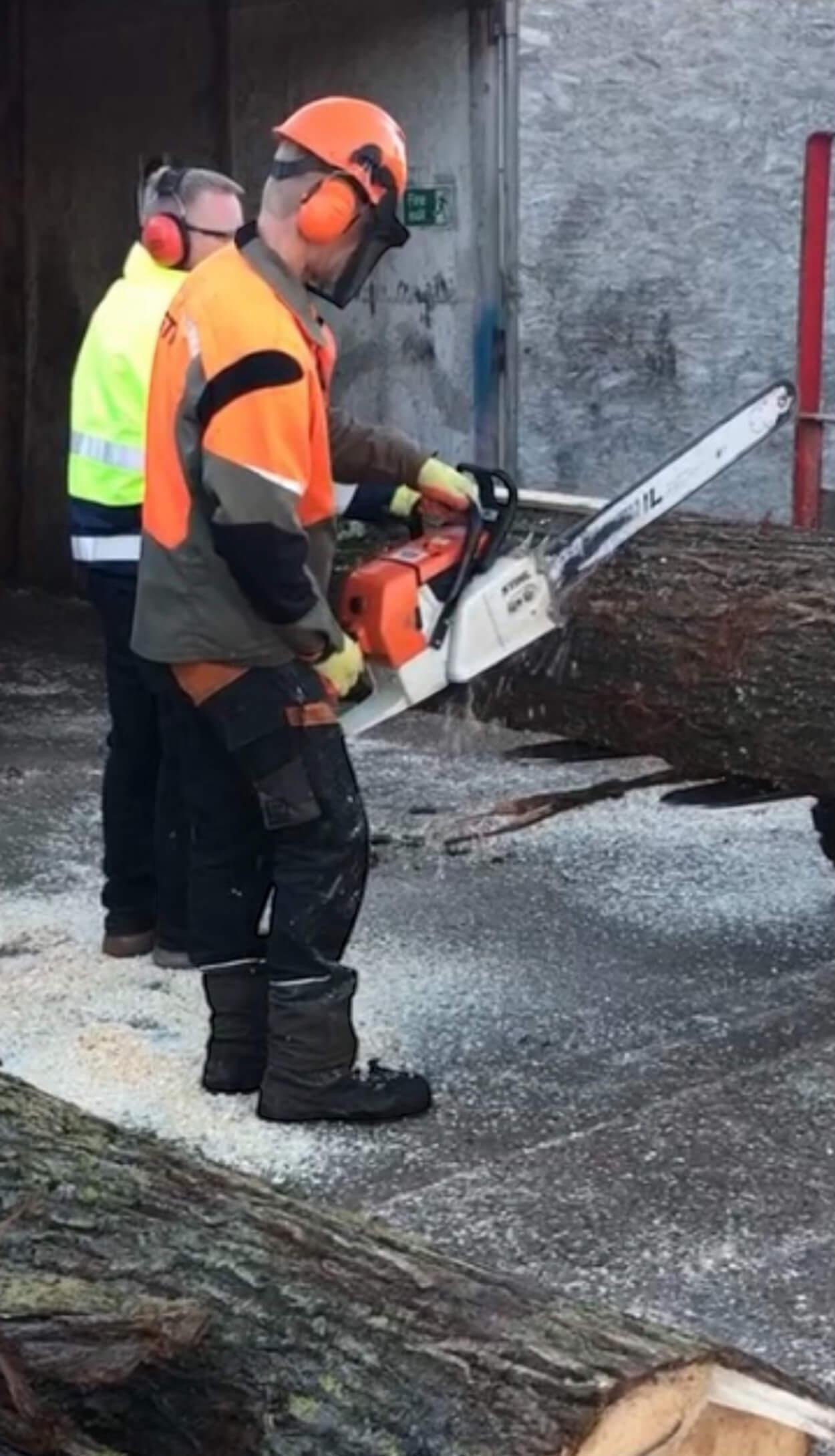
Willow is a lightweight hardwood, known for its fibrous structure and ability to absorb shock. These qualities are crucial for a cricket bat, which must withstand the repeated impact of high-speed balls while providing excellent rebound and control.
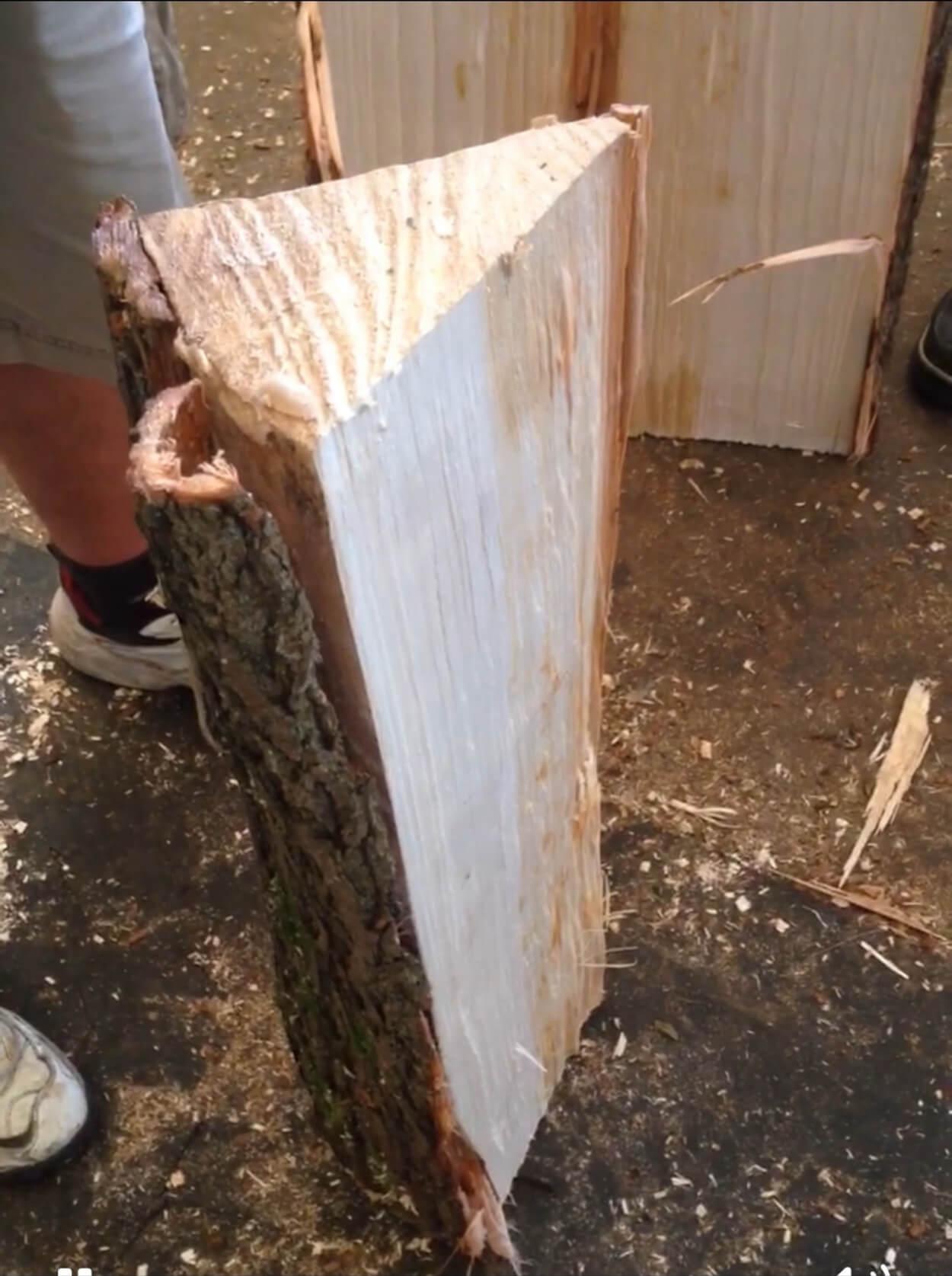
Key Properties of Cricket Bat Willow:
- Grain Structure: Visible lines running vertically on the bat face indicating the age and density of the wood.
- Moisture Content: Properly seasoned willow ensures the right balance of strength and flexibility.
- Weight-to-Strength Ratio: High-quality willow is light but strong, allowing for better bat speed and powerful shots.
- Elasticity: The ability to flex and rebound, providing the distinctive "ping" when striking the ball.
4. Kashmir Willow: Characteristics and Grades
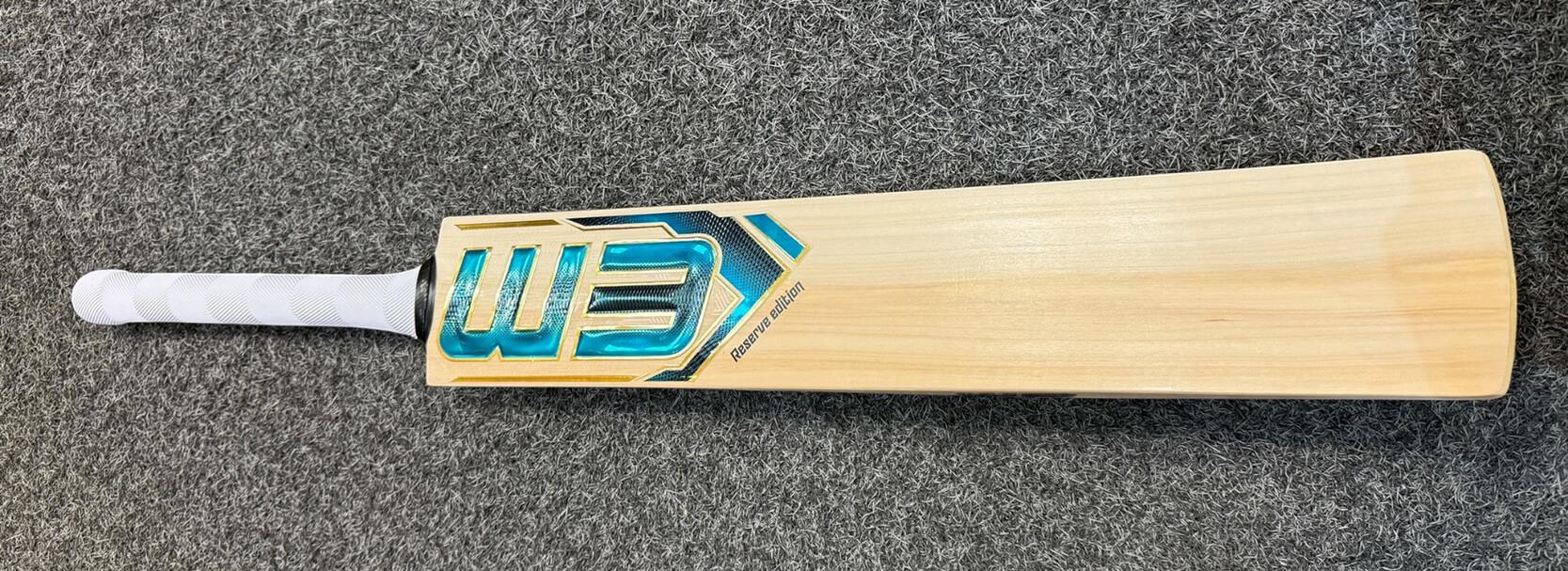
Kashmir willow is often the entry point for many cricketers, especially in Asia. Let's explore its features and the different grades available:
Characteristics:
- Color: Typically darker and browner than English willow.
- Grain Structure: Grains are usually more irregular and less pronounced.
- Density: Slightly heavier and harder, resulting in a bat that may feel less "lively" on impact.
- Moisture Content: Higher moisture retention, especially in humid climates.
- Durability: Known for withstanding rough use and challenging conditions.
Grades of Kashmir Willow:
- Grade 1: The highest quality, with straight grains and minimal blemishes. Offers better performance and durability.
- Grade 2: Good quality but may have minor blemishes or less straight grains.
- Grade 3: More affordable with visible knots and irregular grain, suitable for beginners or practice bats.
Who Should Use Kashmir Willow?
- Beginners and Juniors: Affordable, durable, and a good learning tool.
- Casual/Recreational Players: Great for those not playing at a high competitive level.
- Players in Humid Regions: The higher moisture content can be beneficial in certain climates.
5. English Willow: Characteristics and Grades
English willow is regarded as the gold standard for professional and serious amateur cricketers.
Characteristics:
- Color: Pale, almost white, with a smooth finish.
- Grain Structure: Straight, clear, and evenly spaced grains, often between 6 and 12 grains on the bat face.
- Density: Lighter and softer, providing superior "ping" and rebound.
- Moisture Content: Carefully seasoned for optimal performance.
- Responsiveness: Delivers a crisp, powerful shot with minimal effort.
Grades of English Willow:
- Grade 1+ (Pro Grade): Used by professionals, flawless grains, no blemishes, exceptional performance.
- Grade 1: Excellent grains, very few blemishes, top performance.
- Grade 2: Good grains, minor blemishes, still high performance.
- Grade 3: Some irregular grains and blemishes, good for club players.
- Grade 4: Budget-friendly, more blemishes, suitable for beginners.
Who Should Use English Willow?
- Club Players: Looking for maximum performance and longevity.
- Professional Cricketers: Need the best possible rebound and control.
- Serious Juniors: Those aspiring to higher levels of play.
- Players Seeking Lightweight Bats: The lighter weight can enhance bat speed and shot control.
6. Kashmir Willow vs English Willow: A Detailed Comparison
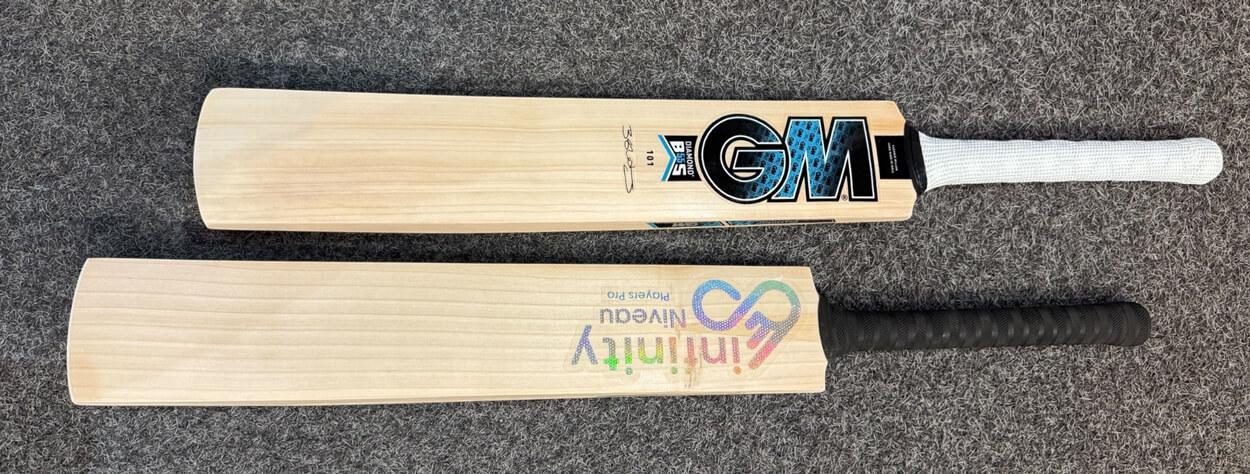
Kashmir Willow vs English Willow: Key Differences
| Feature |
Kashmir Willow |
English Willow |
| Color |
Brownish, darker |
Pale, almost white |
| Grain Structure |
Irregular, less pronounced |
Straight, clear, even |
| Weight |
Heavier |
Lighter |
| Ping/Rebound |
Less pronounced |
Superior "ping" |
| Durability |
Harder, less flexible |
More flexible, absorbs shock |
| Price |
More affordable |
Premium, higher cost |
| Ideal For |
Beginners, casual players |
Club, professional players |
| Grades Available |
1, 2, 3 |
1+, 1, 2, 3, 4 |
| Aesthetics |
Darker, rustic look |
Clean, white, professional finish |
| Resale Value |
Lower |
Higher |
| Repairability |
More difficult |
Easier, better results |
Performance in the Field:
- Kashmir Willow: Durable, can take rough use, but lacks the crisp sound and rebound of English willow.
- English Willow: Provides a "sweet spot" that delivers power and control, preferred by advanced players.
Additional Considerations:
- Aesthetics: Many players prefer the clean, white look of English willow, which is also easier to inspect for grains and blemishes.
- Resale Value: English willow bats tend to retain value better, especially at higher grades.
- Repairability: English willow is generally easier to repair and maintain, with better results from professional bat care services.
7. Why Willow Type Matters for Performance
The type of willow in your cricket bat can affect:
- Shot Power: English willow offers better energy transfer, resulting in more powerful shots.
- Bat Speed: Lighter English willow allows for faster swings and improved timing.
- Control: The superior grain and structure of English willow provide better control over shots.
- Longevity: While Kashmir willow is durable, English willow bats, when properly cared for, can last longer at higher levels of play.
- Comfort: The softer feel of English willow reduces vibration and hand fatigue, especially in longer innings.
8. How to Choose the Right Cricket Bat Wood Type
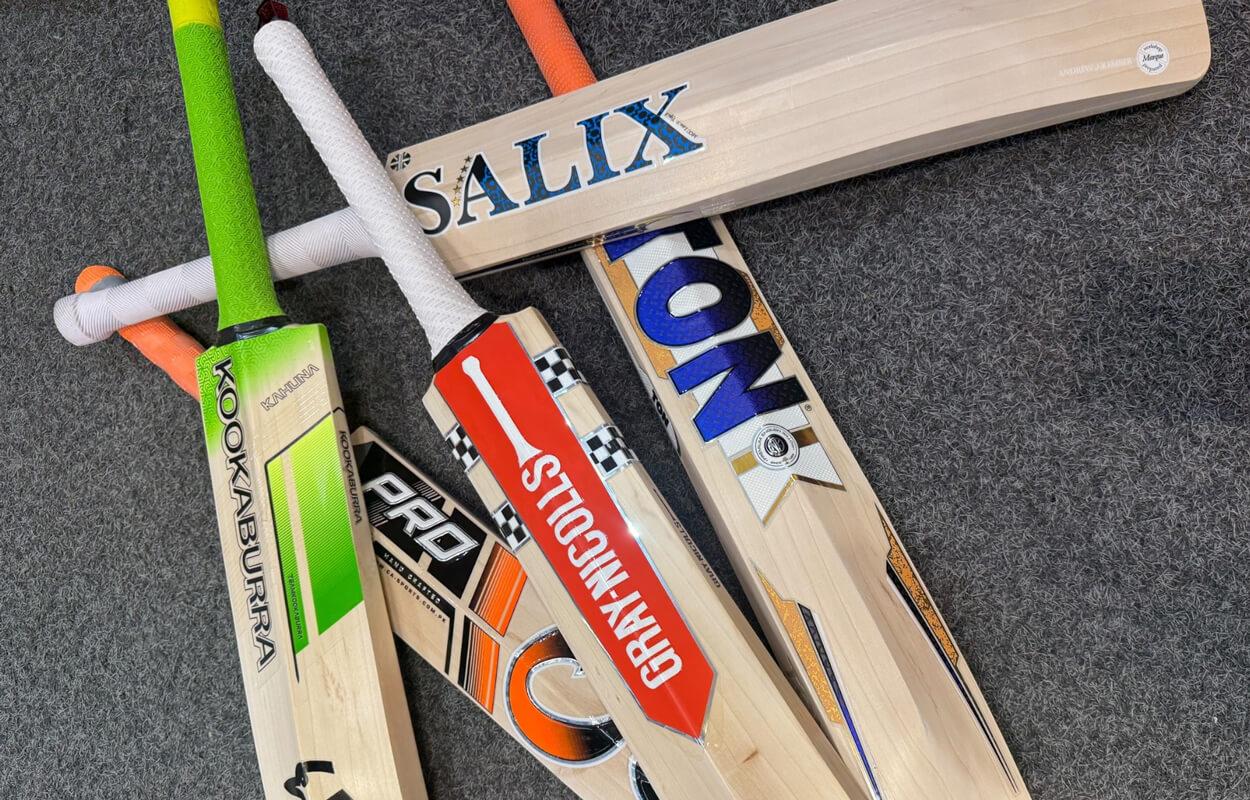
Consider Your Playing Level:
- Beginners/Occasional Players: Kashmir willow bats offer great value and are perfect for learning the game.
- Intermediate/Club Players: English willow is a worthwhile upgrade, offering better performance and comfort.
- Professional/Advanced Players: Only English willow will provide the responsiveness and power required.
Budget:
- Kashmir willow bats are generally more affordable, making them accessible for those on a budget. English willow bats, while more expensive offer performance that justifies the investment for serious players.
Playing Conditions:
- Wet/Heavy Outfields: Kashmir willow's hardness can be an advantage.
- Dry, Hard Pitches: English willow excels, providing maximum rebound and control.
Age and Strength:
- Younger players or those with less upper body strength may benefit from the lighter weight of English willow bats.
Bat Profile and Shape:
- Regardless of willow type, consider the bat's profile, handle type, and balance point. These factors, combined with the right willow, can significantly enhance your game.
9. Myths, Misconceptions, and Market Pitfalls
Myth 1: All Kashmir Willow Bats Are the Same
Fact: There are different grades of Kashmir willow, and the quality can vary significantly. Grade 1 Kashmir willow bats can perform quite well but still don't match the performance of English willow.
Myth 2: You Can't Score Runs with Kashmir Willow
Fact: Many players start with Kashmir willow and develop solid skills. However, as you progress, upgrading to English willow can help unlock your full potential.
Myth 3: English Willow Bats Are Too Fragile
Fact: While English willow is softer and lighter, proper care (such as regular oiling and knocking-in) ensures durability and long life.
Myth 4: More Grains Means Better Bat
Fact: While a higher number of straight grains is often associated with better performance, the quality of the willow and craftsmanship are equally important.
Pitfall: Falling for "Too Good to Be True" Deals
Fact: Beware of sellers advertising "English willow" bats at unusually low prices or offering "Grade 1" bats far below market value. These are often mislabelled Kashmir willow or even laminated bats.
10. Bat Care: Getting the Most from Your Willow
Essential Bat Care Tips:
- Oiling: Lightly oil the face, edges, and toe with raw linseed oil to prevent the willow from drying out.
- Knocking-In: Essential for English willow bats, this process compresses the fibres and prepares the bat for play. Kashmir willow bats also benefit from knocking-in.
- Avoid Excessive Moisture: Store your bat in a dry place and avoid leaving it in damp conditions.
- Regular Inspection: Check for cracks or damage and address issues promptly.
- Toe Guard: Consider fitting a toe guard to protect against moisture and impact damage.
When to Replace Your Bat:
- Major Cracks or Splits: Especially through the blade or handle.
- Loss of Performance: If the bat no longer delivers the desired "ping" or power.
- Extensive Repairs: When repairs become frequent or costly, it may be time for an upgrade.
11. The Problem of Mislabelled and Laminated Bats
One of the biggest issues in the current market is the mislabelling of bats. Rogue sellers sometimes brand Kashmir willow bats with English willow stickers, misleading customers and charging premium prices for inferior products. This practice not only deceives buyers but also undermines the trust in cricket equipment retailers.
How to Spot a Genuine English Willow Bat:
- Check the Grains: English willow has clear, straight grains.
- Color: English willow is noticeably lighter in color.
- Brand Reputation: Buy from reputable retailers who guarantee authenticity.
- Price: If the price seems too good to be true, it probably is.
12. The Emergence of Laminated Cricket Bats
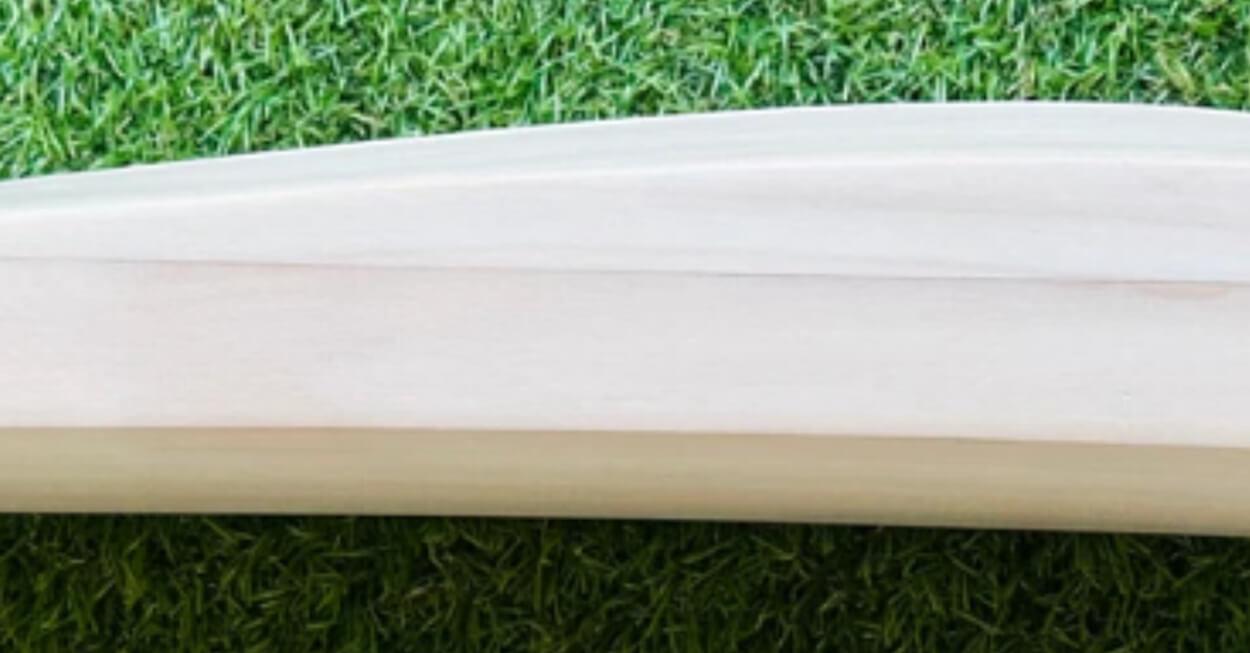
In recent years, the cricket world has seen the emergence of laminated cricket bats. These bats are constructed by bonding two or more pieces of willow together, rather than using a single, solid cleft. The process can offer certain advantages, such as improved durability or cost-effectiveness, and after much debate, laminated bats have now been approved by the governing bodies of the game.
What Are Laminated Bats?
- Construction: Made by gluing together multiple pieces of willow.
- Purpose: Often used to salvage willow that might otherwise go to waste or to create bats at a lower cost.
- Performance: Can be comparable to traditional single piece bats, but quality varies greatly depending on manufacturing standards.
Buyer Beware: Laminated Bat Pitfalls
Unfortunately, the rise of laminated bats has also led to new opportunities for rogue sellers. Some unscrupulous retailers are:
- Failing to Disclose: Not informing customers that the bat is laminated.
- Overcharging: Selling laminated bats at prices equal to or even higher than premium English willow bats.
- Misleading Marketing: Using clever branding or stickers to disguise the true nature of the bat.
This is particularly concerning as we have seen laminated bats being sold for more than genuine English willow bats, despite the significant difference in material and value. While laminated bats are now permitted in official play, it is essential that buyers know exactly what they are purchasing.
How to Protect Yourself:
- Ask Direct Questions: Always confirm whether a bat is laminated or a single-piece willow.
- Inspect the Bat: Look for visible seams or joins, especially on the toe or edges.
- Trust Reputable Retailers only. Buy from a retailer with a physical store or warehouse that clearly show their business address and landline telephone number. Ensure that bat you are buying comes with a guarantee. A cricket bat stockist that has a mobile number only or does not disclose a business address should be avoided.
- Compare Prices: Be wary of laminated bats priced at or above genuine English willow models.
13. Frequently Asked Questions (FAQs)
Q1: What's the main difference between Kashmir willow and English willow?
A: English willow is lighter, has a superior grain structure, and delivers better performance ("ping") compared to the denser, heavier Kashmir willow.
Q2: Can beginners use English willow bats?
A: Absolutely! While more expensive, English willow bats benefit all levels. However, many beginners start with Kashmir willow due to its lower price.
Q3: Are all Kashmir willow bats low quality?
A: No. There are different grades of Kashmir willow. Grade 1 bats can perform well, but still don't match the performance of English willow.
Q4: How do I know if a bat is mislabelled?
A: Check the colour, grain structure and buy from reputable retailers. If in doubt ask for expert advice or certification.
Q5: Are laminated bats legal in official matches?
A: Yes, laminated bats are now approved by governing bodies, but quality varies and full disclosure is essential.
Q6: Why are some laminated bats more expensive than English willow bats?
A: This is often due to misrepresentation or overpricing by rogue sellers. Genuine English willow should command a higher price.
Q7: How often should I oil and knock-in my bat?
A: Oil lightly every few months and knock in before first use only. There is no need to knock your bat in every season. Regular maintenance extends bat life.
Q8: What's the average lifespan of a cricket bat?
A: With proper care, a quality English willow bat can last several seasons. Kashmir willow bats may have a shorter lifespan, especially under heavy use.
Q9: Can I use a Kashmir willow bat in professional matches?
A: While permitted, most professionals prefer English willow for its superior performance.
Q10: What should I do if my bat cracks?
A: Small cracks can often be repaired. For major damage, consult a bat specialist or consider a replacement.
14. Conclusion: Why English Willow is Worth the Investment
To summarise, when it comes to cricket bat wood types, the debate of Kashmir willow vs English willow is rooted in both science and tradition. While Kashmir willow bats offer affordability and durability, especially for beginners and casual players, English willow stands out as the superior choice for serious cricketers.
English willow is a premium wood, expertly grown and crafted for optimal performance. Its lightness, flexibility, and superior grain structure make it the preferred choice for professionals and club players worldwide. The investment in English willow pays off in terms of power, control, and longevity.
A word of caution: Beware of rogue sellers branding Kashmir willow bats with English willow stickers and be vigilant about the true nature of laminated bats. Always purchase from trusted retailers to ensure you receive genuine, high quality equipment at a fair price.
If you're ready to experience the difference, visit VKS, London's finest cricket store. Our team of experts will help you choose the perfect bat for your game, ensuring you get the best value and performance.





